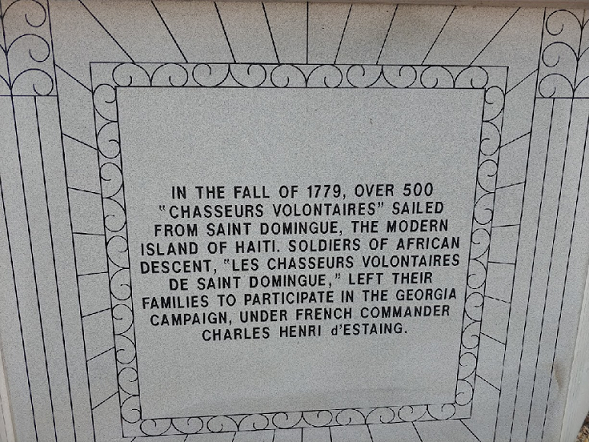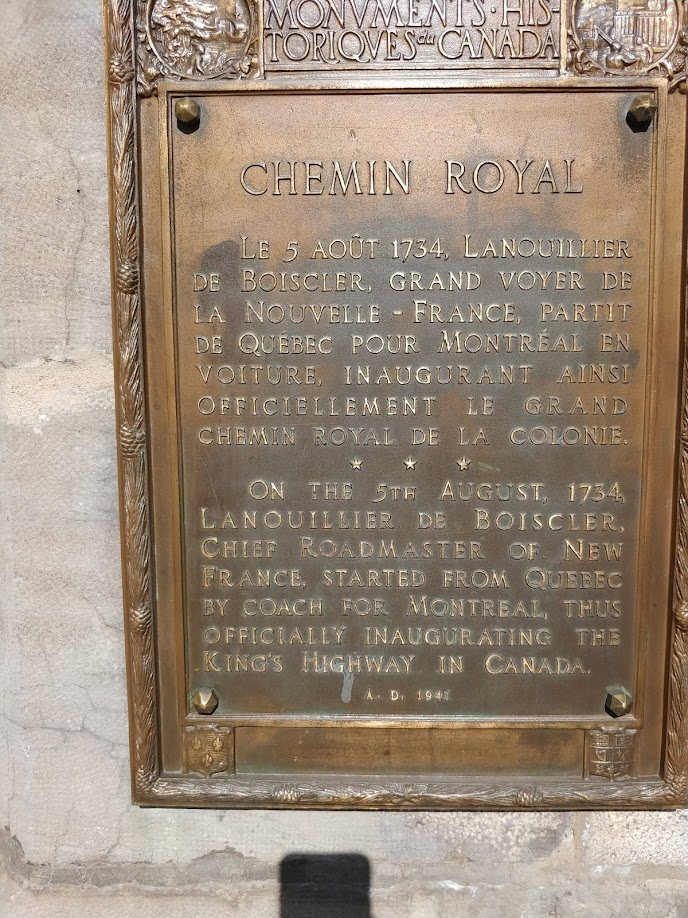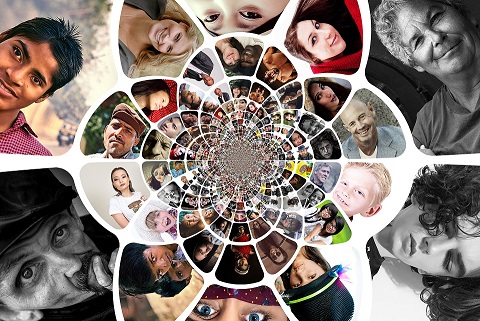B Plot

An interesting book keeps the reader engaged throughout, with surprises and plot twists.
A standard romance trope is good girls with bad guys. This plays out in crime/mafia/biker scenarios where the hero is a criminal, and the heroine is not. Another version is the bully romance, where the hero is a bully or overbearing boss or billionaire who owns everything but compassion. Other bad boys are the nomads, outlaws, snipers, soldiers, and alpha males who care for only themselves.
The bad boy trope is has a male lead that isn’t always likeable. He doesn’t need to have a redeeming quality. Sometimes, the female lead will try to change him, but that can be futile. Such a notion also plays into the false, misleading perception that one must change, that she must change him, to ensure their romantic relationship continues. Another concern with this perspective is that she must tolerate and accept his inappropriate behaviour, outbreaks, bullying, shouting matches, arrogance and sometimes abuse in the name of love.
Anti-hero/bad boy male leads in romances have gained popularity in the last decade. Writers have the right to write such stories. Readers have the right to read such stories. I’m simply pointing out my observations.
Let’s look at the flip side and explore what happens when the female main character (FMC) is the bad character. The bad character is assertive, dominates, breaks conventions, intimidates and breaks the law. What does the bad girl do that jars the reader?
It’s the change in the power dynamic that challenges readers’ assumptions. What happens if it’s the FMC who is the bully boss? Many perceive a woman who is assertive as bossy. Add some intimidation and bullying, and she is perceived as an unsympathetic character. If the female lead is unrelatable or unsympathetic, such characters are cast as villains. Think of the wicked witch in Snow White.
Let’s play around with a bully female character and explore ways for unsettling the trope while still engaging the reader. Bully romances tend to occur in office or work settings. Let’s call our FMC Marie.
Marie is the founder and CEO of a mining company. She works in a male-dominated field. She cannot show doubt or uncertainty, or her leadership is jeopardised. She cannot show compassion towards employees (who have lost a loved one or want flex time) because that makes her appear emotional and weak. If she plays hardball during a conversation, that makes her a ball-breaking bitch.
When her company needs investors, she’ll need to work twice as hard to prove that she’s competent enough to manage the funds to banks and venture capitalists. She’ll likely get unfavourable terms and conditions on loans and investments. She’ll push back on the conditions only to receive even more unfavourable counter-offers from banks and investors. This can make her bitter and mean.
Not quite the kind of female lead many readers can relate to, let alone stick with for sixty thousand words.
Let’s flip the situation again. The male main character (MMC) is named Scott. He started a tech company and approached venture capitalists. He was confident and assertive and landed ten million dollars to start his company. He elbowed and clawed and bullied his way to the top of the industry.
What is he? A bad boss or an inspiration? Odds are he’s viewed as a role model and inspiration. He’ll be invited to speak at prominent conferences and forums. He’ll be regarded as a captain of industry.
Despite these and other challenges, my advice is to write the story you want to write. Write the story that smooths feathers or the one that ruffles them. My overall suggestion is to be aware of how your story will be perceived. Start a conversation about expectations and norms and then smash those common beliefs. Write a story that meets readers’ expectations while sharing insight into why or how these expectations are harmful.
What makes bad boy tropes appealing is their alignment with many people’s expectations of power and authority. What makes bad girl tropes confrontational is that they don’t measure up to readers’ expectations of women. Sometimes this can be appealing to readers. Often it pushes readers away.
Whichever version of the bad person trope you choose to write, always include one or two redeeming qualities to ensure the reader can empathise. Allowing for both positive and negative qualities makes the character more realistic and believable as a love interest and, in the end, loveable.
Thank you, @Sstaatz, for the topic suggestion.
Readers are encouraged to reach out to me on Twitter @reneegendron to continue the conversation.
The image is courtesy Yan Krukov from Pexel.com

I draw inspiration for stories from two main sources: tumblers and plaques.
The first source is tumblers where I playing around with a world. I enjoy building communities, exploring professions, interpersonal conflicts, friendships, families, and economies. I like writing communities because they change over time. People move away, they move into a place, people start businesses, businesses fail. There’s always a push and a pull.
I play around with tropes, professions, and how they interact with the meta-story. I get an understanding of a meta-conflict that can keep a series going, and then I drill down to individual stories.
I love playing around with tropes. I learn about tropes from different sources. The first source is TV tropes(1). TV tropes does an excellent job breaking down the plot points, identifying common aspects of the main characters, and linking the story to the broader genre. If you’re not careful, you can lose a week of your life on that website.
The second is Mindy Klasky’s website(2). Mindy’s website has a variety of romance-related tropes. They serve as touch points to craft a story around. The third is Go Teen Writers, which has an impressive list of romance tropes.
I think in terms of process and structures. Once I have a sense of the story’s structure, I set out to make the characters unique. I create characters with unusual professions. For example, in my upcoming release, Seven Points of Contact, Miranda is a car loan officer, and Jonas was a salesman but is considering opening a sporting goods store. Characters with professions that aren’t normally portrayed in stories are more interesting to write. The characters bring different skills and experiences to the romance (in my case because I write romances) and the non-romance plot (I always include a non-romance plot).
I play around with professions and tropes. What’s more interesting for characters with those professions to do? Is it more dynamic to have an enemies to lovers or a road trip trope? I fiddle around with the dynamics, see which one generates more conflict, and take it from there.
I write long series. I keep a series-long table of the characters, professions, the romance and non-romance tropes (mystery, thriller, action-adventure, etc.) I ensure that each book has a unique combination of these variables.
For my Outdoorsmen Series (contemporary crime romance), the common thread is people who like being outdoors. I ask myself what kinds of jobs they have, what are their interests, what problems do their jobs and hobbies cause. If someone likes fishing and gets up at 4am, that will cause problems with their significant other who likes to stay out late at comedy clubs.
I played with professions (different environmental law enforcement officers in Environment Canada, the province of Ontario) and different love interests (translater or intellectual property lawyer with a food business). I played around with the crimes they solve.
Tumblers: romance trope, crime(s), professions.
For my mines and minerals series, I look at the historical context (western Canada in circa 1885). I think of the hardy souls who would have endured the long journeys and the brual cold and pioneered. I think of the First Nations who lived there for thousands of years and their cultural shock at encountering Europeans. Which dynamics that does this create that can be harnassed for a good story?
Tumblers: romance trope, non-romance trope (save the ranch, start a business on the frontier, etc.) professions.
For my Heartened by Sports series, the common thread is sports. What kind of sports do people play, how does that impact their lives, are they professionals or amateurs, what are the dynamics of that community (competitive sports with an eye on the big leagues or amateur with an eye for the beer after the game)?
Tumblers: sports, non-sports income, romance trope, non-romance plot.
I call this process a tumbler process. I look at the combinations, see which ones click, and ensure that each combination (a book in a series) is unique. For example, I write western historical romances. One book might have a rancher as a lead character who experiences a friends to lovers romance on an action-adventure trope. If I have a second rancher in that series, they will have an enemies to lovers trope and a thriller non-romance trope.
The second source of inspiration is history. Yes, I’m the person who reads historical plaques. At the beginning of this blog, the picture is the plaque from a statute in Savannah, Georgia. I found it interesting that a regiment of troops of African ancestry from Saint-Domingue was dispatched to support American troops fighting the American Revolutionary War. The regiment was critical in the Siege of Savannah, capturing the city from the British.
I take pictures of statues and historical plaques. Here are two pictures of some of the plaques I've photographed.


When I see these plaques, I think of the people who would have first witnessed the event. I think of their lives, their families, the struggles they faced. I think of how would they felt might have felt witnessing the event.
I tease a story from there. I insert a sliver of historical truth (or possibility) and insert it into the past or some fantasy or contemporary or sci-world. I play with the idea. I run it through tumblers.
Yes, the chasseurs-volontaires from Saint-Domingue, the seigneurie of L’Orignal, and the opening of Canada's King's Road will have a place in upcoming stories. No, they won’t be incorporated into the same story. No, I don’t have a date as to when the stories involving these two events will be released.
Tumblers and history. That’s where I draw my inspiration.
Which tumbles influence your writing? Reach out to me on Twitter @reneegendron or on FB
Thank you, @LouSchlesinger, for the topic suggestion.
(1) https://tvtropes.org/
(2) https://www.mindyklasky.com/index.php/for-writers/romance-tropes/
(3) https://goteenwriters.com/2015/12/16/145-romance-tropes/

I’ll start by saying it’s okay not to write. There are periods in your life when you don’t feel like it. Every writer has a different process, and for some writers, part of that process is taking a break from writing.
It’s my belief that if you’re stuck in a creative project, something is blocking you. It’s not a lack of talent. Someone who is stuck in a rut lacks a support structure to ensure they can engage in creative practice.
Let’s adopt a Maslow Hierarchy of Needs approach. His original version had five tiers. Subsequent research and theories have added three additional tiers. I’ll use the expanded version. The premise until the primate needs are met, it’s impossible to meet social, psychological, and emotional needs. I’ll present the needs in sequence from bottom to top.
Physiological Needs
If you want to write but find it difficult to connect with your creativity, begin with the basics. It’s hard to be creative when you’re sluggish from too little sleep, too much sitting at a computer, or facing a vitamin deficiency. Ensure that you exercise, get enough sleep, properly hydrate, and eat a balanced diet.
Safety Needs
You need a safe space to write. If you’re stressed about paying the bills or having a place to live, this will naturally draw down your inclination to write. There are some things beyond your control. You can apply for jobs twelve hours a day, every day, but there’s always a lag between an application, the interview, and starting the job.
There are community services to provide food security, municipal services for housing and rent.
Pre-pandemic, I suggested people go to the library to write. It’s a change of location, and it can help take your mind off other stressors. In the pandemic, where you can go is subject to closures. Sitting in your car, bundling up on your balcony, sitting in a park for fifteen minutes to jot down some notes or to dictate are some safe places you can go.
Don’t worry. With how 2020 and 2021 went, no one will think twice about a person speaking to themselves in a park. It will probably be one of the most normal things they see that day.
If you can’t find a suitable location to write, do what you can to change your office (or writing space). Add a few plants, brighten up the colours, change where you sit, or remove clutter. These changes will help clear your mind of distractions and make your space a stronger reflection of you.
Belonging and Love Needs
Human beings are social creatures. The last two years have been hard on everyone. It’s hard to write when you’re depressed, anxious, lonely, or feel like you don’t belong.
The only advice I have is to keep looking if you haven’t found supportive people with whom you’ve clicked. Join different hobby groups, book clubs, chat with people you meet in the park. Eventually, you will meet people who want to see you thrive and will support you on your journey.
Esteem Needs
Publishing work is a daunting task and can be hard on your self-esteem. Most writers are concerned with how readers will receive their writing. It’s important to have a strong support group and review your work several times before publishing.
Remember, even Nora Roberts and Stephen King have harsh critics, but they keep writing.
You can't please every reader.
Keep track of your accomplishments. View writing as a journey, not a destination. Compare the quality of your work today to ten years prior. You are a work in progress, constantly learning and improving. Engage in activities outside of writing to boost your self-esteem.
Cognitive Needs
People need mental stimulation to grow and thrive. If you’re bored all the time, it’s hard to find inspiration to write. Excellent writers read a lot. They take workshops, join associations, network with writers, critique others’ works. Mental stimulation is needed to hone craft and develop self-confidence.
How do you engage in your craft? How do you hone it, practice it, experiment with it?
Are you engaged enough with other writers? If not, how can you expand your network?
Aesthetic Needs
This need refers to improving aesthetics and balance in life. Perhaps you’re working too hard at the day job and need to carve out more time for self-care and hobbies. Perhaps you need to spend more time with your friends and family to recharge.
At this level, you may consider changing how you dress or getting a new hairstyle to feel yourself again. It’s been two years of zoom calls and living in cramped spaces. Many of us are wearing sweatpants and hoodies and have COVID shaggy hair when we used to wear clean blouses/shirts with neatly pressed trousers.
Perhaps it’s the other way around. You’ve been wearing a suit and tie when you’re most yourself wearing jeans and a tee-shirt.
Find (or reconnect) with a sense of dress that you feel proud to wear.
Once you’ve grounded yourself, you’ll likely have time and energy again to write.
Writing is one form of creative expression. It’s a form of aesthetics. If you’ve met the other needs sufficiently, then take a closer look at what you want to create. Perhaps there’s something in there that you fundamentally don’t like. You can’t relate to the characters you’ve created. The conflict or backgrounds are meaningless to you, or the story has the wrong mechanics. In other words, the story you are writing is somehow ugly to you.
How can you make the story more appealing?
Sometimes that means letting it go and starting something else. And that’s okay.
Transcendence
Transcendence is the highest level on Maslow’s Hierarchy of Needs. Individuals who have reached this level are confident and capable. They have plenty of ideas and are implementing them. They have successfully integrated the various levels of the pyramid of needs and led fulfilled lives.
You’re welcome to reach out to me on Twitter @reneegendron
I want to thank @TonyaAtki for the topic suggestion.

I put out a call for suggestions for my next blog post on Twitter. @SStaatz suggested that I write about romances after the Christmas period. There are plenty of romances leading up to Christmas, but few set in the immediate period after Christmas.
I decided to not write a how-to article. Instead, I wrote a romance set in the after-Christmas period. The characters are fictional and are not based on any real person.
**
Alice Nowak packed her white Christmas tree in its box. Tall enough to be on a table without touching the ceiling and eye-catching enough to not be burdened by dozens of ornaments. A few blue and red glass decorations were enough to make it shine.
Box placed in the basement for another year to collect dust, she climbed up the stairs and sat at the kitchen table. She dared not open the fridge with the ten pounds of leftover turkey and the Tupperware container full of nuclear-holocaust-proof cranberry sauce.
She’d pick away at the food over the next few days. Eat three meals a day of lean meat coated with red sugar. A diet of sorts, one weaning her off shortbread cookies, chocolate, rum, and pumpkin pie.
Her house was still. The noisy nieces and nephews riding sugar highs on little sleep returned to their parents, a form of a thank-you gift for having run amok for three days and two nights in new territory. No combination of Netflix, Xbox, or snowball fights could subdue their boundless enthusiasm.
She reviewed the texts on her cellphone. All thank-you’s and Merry Christmas’ and group photos of the same shot from slightly different angles with slightly better or worse cameras.
Like all she wanted was fifteen photos of little Bobby sitting on grandpa-turned-Santa’s knees, too shy to ask for his present but too proud not to smile for the camera.
Ah. Gone were days spent scribbling on the backs of photos and placing them in photo books. Welcome to the days of Google Photobooks with unlimited storage, unnamed photos, and the constant reminders of ‘best memories of October’ and ‘best memories of November’. Like the pictures from inside the carwash and the heap of leaves texted to a sister were the best days of her life.
Well. Maybe. They were her best days in the past three years.
Some life.
She spent three days picking at leftovers in sweatpants and extra-warm socks that pulled up to her midcalf. Feet propped up on the coffee table, she watched every Christmas movie made since the dawn of motion pictures. She knew the lines, the scenes, the actors, the ups and downs. Yet, she watched. Part tradition, part boredom, and everything to do with not wanting to move from her comfy couch.
New Year’s Eve came and went. A few friends came over to celebrate, each with a bottle of wine in hand, all leaving having spent the night in the spare bedroom or couch or inflatable bed and left with no appetite and a headache.
Jeans tighter than they were two weeks prior, house clear of excess alcohol and sugar, she put on her snow boots, tucked her sketch pad into her purse, and trudged up the snow-filled sidewalks to the nearest café.
Hot chocolate in hand, she sat on a bench in a café overlooking the street.
The bubble of Christmas and New Year’s popped. Everyone hurried to make up for five weeks of slacking off—Christmas shopping, preparation of parties, parties with friends, parties with coworkers, parties with children’s friends, parties with that group of friends, parties with this group of friends who shouldn’t be left out, standing in line to buy presents no one wanted and more food than anyone could eat.
Now reality.
Now the stack of bills that flooded email inboxes. Now the dings on the credit cards that lowered credit ratings. Now the anticipation of meeting family and friends for the first time in months, gone.
Long, exhausting, frustrating lines at bus stations, train stations, and airports. Oh. And the clogged highways of impatient, likely still hungover, drivers, honking and cutting their way into lanes, inching that much closer to the end of the holidays crash.
Psychological, emotional, financial, and physical crash.
First day at the office. Inundated by reality.
She sipped her hot chocolate. Her last refuge in the not-quite-done holiday period, Alice sketched the car in front of the café. A late four-door model with snow on the bumper and side mirror. She drew two children clad in snowsuits collecting snowballs and throwing them at the window in front where she sat. One snowball landed with a splat, the other child would up and was poised to throw. His striped tuque flopped on his head in a where’s-Waldo-impersonation.
“That’s really good.” His voice was scratchy, walking-in-from-the-cold-and-hadn’t-yet-had-a-chance-to-sip-coffee, scratchy.
“You think?” She eyed her work, thinking it needed something across the street. Perhaps a shop with a Christmas tree or a mannequin in a winter dress in its window.
“Yeah. It captures playfulness and mischievousness.”
“What if added an elf hat on one of their heads?”
“It would ruin this. This is a winter drawing, not a Christmas sketch.”
She nodded. She held her pencil over the head of one of the boys and pencilled in a regular tuque with a pompom.
There. Both boys had moms who dressed them warmly.
“Cartoonist?” he asked.
“Of a type.”
She smoothed out a pencil line and softened the edge of a boy’s chin. “It’s more of a hobby. I sketch and sell them online.”
“Really?”
“Yeah. I sell them through a print on demand service. People print them on tee-shirts, coffee mugs, keychains, that sort of thing.”
“They sell well?”
She shrugged. “Well enough to buy a box of candy canes and peppermint hot chocolate.”
He chuckled, a little higher pitched than most men but more sincere.
Silence blanketed the conversation. She flipped a page and sketched her hot chocolate mug. To its right was a man’s hand, with a bit of hair on the back, cupping a mug of coffee.
“What will the caption of that one be?” he asked.
Her hand sliding to his to hold it, trace the lines of his fingers, the curve between his index and thumb. Not quite a Hallmark caption, more of instructions for her.
“I’m not sure yet,” she said. “I let the customer pick what the caption is going to be.”
“How about ‘post-Christmas present to self’?”
She laughed. “That’s about all most can afford.”
“Don’t forget the design the barista would put in their coffee.”
“He drinks it black.”
“I agree.”
She glanced at him for the first time. He had an interesting curve of his nose. Not a regal or large nose, but a proud one. A thick scarf hung loosely around his neck, and black stubble pebbled his cheeks.
“Alice.”
“Tyler.”
She returned to her sketch to keep from drooling hot chocolate over him. “Escaping the wife?”
“No wife. Needing a break from the parents.”
Relief spread through her chest, but she didn’t release the pent-up sigh. Forty-three and divorced didn’t equate desperate for a date. No way at all. Not that it had been a year and a half since her last semi-decent date.
Eager, not desperate. There was a difference, so her battered pride said. “Spared of the kids?”
“They’re at the ex’s this Christmas. Two provinces away.”
“Must be lonely.” She missed her two children, an hours’ drive away. Not that she would tell them to their face. Then she’d never regain control over the house.
“I miss them, but I like an empty house, too.”
She nodded. She smoothed the edges of the candy cane and added a twig of holly. It was a bit too Christmas-y for her sketch, but she balanced it out with a notebook and a cellphone.
He sipped his coffee. A strong, bold scent wafted over her. Bitter in scent, even, but his company was kind.
She flipped to a new page in her notebook. She looked out of the window at the passing traffic. A few taxis drove by. A woman in too-high bootheels pushed a too-expensive stroller. Add a pair of ostrich feathers and a fox shawl, and she was the perfect leading lady in a 1930s movie.
“What do you do?” she asked.
“Other than sit in coffee shops staring into oblivion?”
“It’s three days into the new year. It’s too early for oblivion. You’ll need something stronger in your coffee to call it that.”
“It’s a triple expresso.”
“Explains how acidic it smells,” she said.
“It keeps me awake.”
“It keeps me awake.”
He laughed, rich and bold, just like the smell of his coffee. “Sometimes you can’t, you know?”
“You’ve got three pots of that sludge in you, and you wonder why you can’t sleep?” She sketched his hand, no coffee mug, no table, no hot cup of hot chocolate, only his hand with his wide wristwatch.
“Caffeine’s never prevented me from sleeping.”
“And what does?” she asked.
A moment’s pause, long enough for him to drag a sip from his mug and put it down again. “Life. Its twists. Its turns.”
“You mean a series of dips, dives, and crashes.”
“And those.”
She sketched his forearm, encased in a thick wool sweater, the kind worn by fishermen in commercials. A manly sweater with a thick collar.
“Waiting for someone?” he asked.
Him. “No. Trying to regain my sanity. I forgot what it’s like to spend a family meal with everyone together.”
“Not close to your family?”
“I’m close to them. Just not all at once. I see my brother a few times a month to watch a hockey or baseball game. Parents every other weekend for dinner. Easy. Simple, bite-sized pieces of them when there’s booze or an activity to distract. Preferably, both at the same time.”
“Can’t just be any booze. Has to be top-shelf stuff as a reward for enduring.”
She brought her pencil-holding hand to her mouth and laughed. The tip of her pencil smudged across her top lip, and she wiped it away, but she laughed some more, smearing more charcoal. She reversed the camera on her cell to wipe away her Charlie Chaplin moustache.
“Come here.” Tyler hooked his finger under her chin and angled her face to him. “There are a few smudges.” He ran his thumb along the corner of her mouth and traced a finger along her top lip. “There you go.”
She smiled, shrouded with embarrassment. “Thanks.”
“No problem.” Beautiful espresso-black eyes met hers.
Her heart fluttered like she was on a first date with a promising man. Only this wasn’t a date, and he was just whiling away the time until his children returned.
She slurped her hot chocolate. She dabbed her index finger over her lip, clearing away the foam.
He laughed. “You like moustaches?”
“Have to confess. Ned Flanders was my favourite cartoon character.”
“It shows.” He dabbed her upper lip with a napkin.
“I can’t do this.”
“Walk around without a moustache?”
She shook her head. “This. Flirting. Fun.” Another f came to mind.
“Why not?”
“Two kids to shuttle around from ski hills to band practice, friends, doctors, dentists. I’m more nurse and chauffeur and cook than mom.”
“What does that have to do with anything?” he asked.
“It means they come first—with time, money, and problem-solving. It’s a lot of mental effort keeping the house organised.”
“I know. Mine come first, too. They’re visiting their mom, but they live with me.”
“Really?”
He nodded slowly. “She’s a regional salesperson. Never home more than two days at once. I work nine to five. If traffic’s good, I have dinner at the table by six.”
“And if it’s bad?”
“It’s a call to the local pizza place on the way home. Dinner’s on the table by six-thirty.”
“Good system.”
He lifted a shoulder in a slow, self-effacing shrug. “It’s worked so far. Both have good grades and enough energy to play sports.”
“Which?”
“Guess,” he said.
“Both boys?”
“One girl, one boy.”
“The girl plays basketball, and he plays lacrosse.”
His eyebrows rose a little. Less than an arch, more than a twitch. “How’d you guess?”
“You’re tall and thick in the shoulder.”
“But not a hockey player?” he asked.
She shook her head. “No. You don’t seem like the kind to like the cold of an ice rink.”
“Why not?”
She hooked his scarf with a finger. “You’ve been here thirty minutes and haven’t taken it off. Can’t see you skating around a rink.”
“Could never stand the cold. And yours?”
“My kids don’t mind so long as there’s snow to ski.”
“Alpine?”
“Or cross country. It doesn’t matter to them. Snow. Snowboards. Skies. It works.”
“And you?” he asked.
“Eh?”
“What sport do you play?”
Bed sport. “Not really athletic. Hurt my ankle in elementary school, which kept me out of soccer. Tried rugby in high school and that worked for a while, but I hurt my shoulder.”
“And now?”
“I bike in the summer, walk in the winter. You?”
“Golf in the summer. Wait out the winter.”
Her cheeks lifted in a smile. “Probably head south to play golf in the winter.”
“Only if the sales are good that year and if I have the kids. It’s not fair to them for me to go on vacation without them.”
“Seems fair.”
“I’m always fair.” He finished his coffee. “And what’s fair to you?”
She stopped sketching.
Fair. Fair was a foul word. Fair was honouring marriage vows. Fair was child support payments paid in full and on time. Fair was showing up on time to pick up the kids when it was the ex’s turn to have them.
Life wasn’t fair. Life was some twisted game of how unfair it could be.
“Fair’s keeping your word,” she said.
“That sounds right.”
She waited for a counter-argument. More silence.
The coffee shop emptied. They were the last two patrons.
“Another?” she asked.
“Sure. Double expresso. Black.”
She returned with a hot chocolate and a double expresso. “How do you sleep?”
“I don’t.”
“Why not?”
“I like to think.”
“About?” she asked.
“Everything. The twists, turns, angles, and systems.”
“Engineer?”
He inclined his head. “That obvious?”
“You’re too much in your head.”
“You?”
“I don’t live that much in your head.”
He cast her a sideways look, and there was nothing but amusement in his eye. “What do you do?”
“Office manager. Part-time sketcher.”
“Dinner?”
“I can’t afford to go out. Not for another month and a half.”
“Neither can I. Dinner at mine? Mid-February.”
She laughed. “My kids have ski-club on Thursday.”
“That work. My daughter’s got ringette and my son band.”
“Thursday, at yours at six.”
“Bring the napkins.”
**
Thank you for reading. I'd love to hear from you. You can reach out to me on Twitter and on Facebook.
Seven Points of Contact is available for pre-order. You can also join my newsletter for sneek peeks and exclusive content.

Writers often write ‘the other’. The ‘other’ are characters from different genders, backgrounds, ethnic groups, religions, occupations, lived experiences, and political affiliations from the author.
A cast of characters from different walks of life makes the world more immersive and the story more engaging. Each character has a unique background, personality, traumas, strengths, and weaknesses.
There is an inherent challenge of writing characters from different backgrounds from the author. Too often, writers fall on writing stereotypes. This is both insulting and lazy writing. People from ‘the other’ have rich and diverse experiences, viewpoints, opinions, personalities, skills, talents, and passions. Shortchanging ‘the other’ means you do a disservice to the reader and the story.
Writing caricatures will likely offend many readers and will weaken the stories. Readers crave authentic characters—characters they can relate to, love, hate, and cheer.
Authentic characters have individual goals. They have individualised hurts from a rich and textured background. A person who grew up poor but in a loving family will have different coping mechanisms and a different outlook on life than someone who grew up poor but was abused throughout childhood. Each character has a different willingness to trust strangers, coping mechanisms (some healthy, some not), skills, talents, lost opportunities, resources, seized opportunities, and dreams.
Let’s consider a character raised in an impoverished but loving family. Her name is Lisa. She was raised with the belief that family is everything. Her family spent every night doing things together—hiking, board games, card games, gardening, household chores, social events. There were always people around, visiting, socialising. All the neighbours had a similar background. All their fathers worked at the mill, and all their mothers had jobs as cashiers at the grocery store, household cleaners and school bus drivers.
Lisa is caring, nurturing, and very social. She loves spending time with her family and community. She participates in countless community events through her school, her hobby group, her religious group, and all the events of her siblings, their spouses, and their children.
Lisa trusts easily because she grew up in a tight-knit community of hardworking and honest people. Lisa trusts the wrong person too easily, which leads to disastrous outcomes.
Everyone Lisa knew had similar jobs, similar education levels, and a similar outlook on life. There was no ‘getting out of poverty’. Everyone accepted some bills wouldn’t be paid on time—or ever. No one thought of learning a different trade. No one thought of leaving the community for better prospects. If someone didn’t have enough to feed their children, the neighbours knew (but never held it over their heads) and showed up with casseroles for dinner and bread and cheese for breakfast. No one ever asked for food, and no family ever went without.
Lisa grew up accepting minimum wage jobs were her future. Her ambitions are more social than economic. She wants to be a good wife, mother, and neighbour. She’s devastated when the local mill lays off staff, cutting the second shift, but it never occurred to her to start her own business or move to another town with a mill that’s hiring. It doesn’t occur to her to save money (not that she ever had much left over), and she’s afraid of leaving her tight-knit community for another job because she’ll miss them too much.
Lisa’s background, upbringing, and outlook on life influence her decisions. Her background and personality need to be reflected in the story.
That’s Lisa.
Let’s take a look at Marilee. Marilee also grew up poor. Except, she didn’t know her father, and her mother had no idea who Marilee’s father was. Marilee’s mother sold herself for another hit of heroin. And another hit. And another hit. That was until the latest designer drug came out, and Marilee’s mother sold herself for a hit of the designer drug.
Marilee was left alone for long periods throughout her life. She wasn’t a fussy child because she learned early on no one would comfort her when she cried when she was hungry or wet or scared.
She had one stable adult in her childhood, the kind old lady across the hallway. Hazel. Hazel ensured Marilee had at least one hot meal and clean, dry clothes once a day. Hazel minded Marilee when Marilee’s mother saw her clients.
That was, until a client, in a drug-induced rage, burst out of Marilee’s mother’s apartment, and murdered Hazel in front of Marilee.
Since then, Marilee fended for herself. Eating bread, instead of sandwiches. Marilee’s mother never enrolled Marilee in school, so Marilee has no formal education. Social services have no record of Marilee’s birth and don’t check in on her. Marilee is semi-literate, has no positive role models, no support system, and lives in a high violent-crime area. Everyone around her is involved in crime in some way.
Marilee doesn’t have the contacts or resources to leave her community. She doesn’t have the basic education to work her way out of her area. She doesn’t have a network to gain access to opportunities. Her horizon is short-sighted. Everything is in survival mode. She doesn’t trust men because her father abandoned her, and her mother was abused by a string of violent, drug-addicted, criminal boyfriends.
Marilee trusts no one. Having a child would be her death knell because of the costs and burden. She doesn’t have any friends. She has no hope or dreams and has a very pessimistic outlook on life.
Her background influences her choices. She’s not the type of character who will be a team player from the start. She may learn to play well with a team, but that won’t be her starting mindset. She’ll be looking out for number one: her. She’s also more likely to quit a team, take the cash and run, and be desensitised to violence.
Writing the other. That’s the point of this post. I gave you two different character profiles from the same general background of reduced economic circumstances.
Each character has different goals, different motivations, different personalities. Similar events marked them in different ways.
When writing a character from a different background, gender, ethnic group, linguistic group, occupation, personal lived experience (incarceration, war veteran, abuse, etc.), religion, completed education, (and so on), make them unique. Give them each unique goals, motivations, and conflict.
More to the point, do your research on the constraints of each variable. A woman who is a mother and a plumber faces different constraints than a man without a wife or a child. She will have to juggle childcare, missed parent-teacher meetings, and overcome stereotypes from her colleagues and customers that women aren’t good plumbers or aren’t strong enough to be plumbers. She’ll also work irregular hours (ruptured sewer lines or clogger toilets at 03h00) which means she needs different types of support to watch her child.
Yes, men can face childcare constraints. As of writing this post, most single-parent households are led by women. As of writing this post, most primary childcare responsibilities still rest on the mother, whether she works full time or not.
These are some nuances with which writers can play. What if your MC was a male plumber who was a single father of two? How would that impact his day if he had to turn down jobs because he couldn’t find a babysitter?
If Paul were a single father and a plumber, he would likely be favourably regarded if he were a single father. He will likely have the immediate support of his mother and female relatives to look after his child. He will likely earn more to pay for additional childcare supports. He will not be looked at the same way for working late or irregular hours as a single mother.
Writing the other is about being realistic. It’s about exploring the nuances of perceptions, the impact of upbringing, the role of resources (or lack thereof), and the dynamic between nurture versus nature.
Not everyone from an impoverished background will have the same worldview. Not all Franco-Ontarians have the same worldview. There’s a rural-urban divide. There’s a personality divide. There’s an occupational and political divide. A religious gulf. There’s a life experience divide. And so on.
Explore those divides. Make the joys and pains real. Make the dreams believable and the nightmares raw.
Above all else, make the characters deep. Don’t make them two-dimensional cut-outs. Give them dreams, fears, personalities, resources, traumas, and spirit.
Writing the other is about respecting and acknowledging the richness of our lives.
Thank you, @JPGarlandAuthor, for the topic suggestion.
How do you write the other? I encourage you to continue the conversation on Twitter. Tag me with @reneegendron